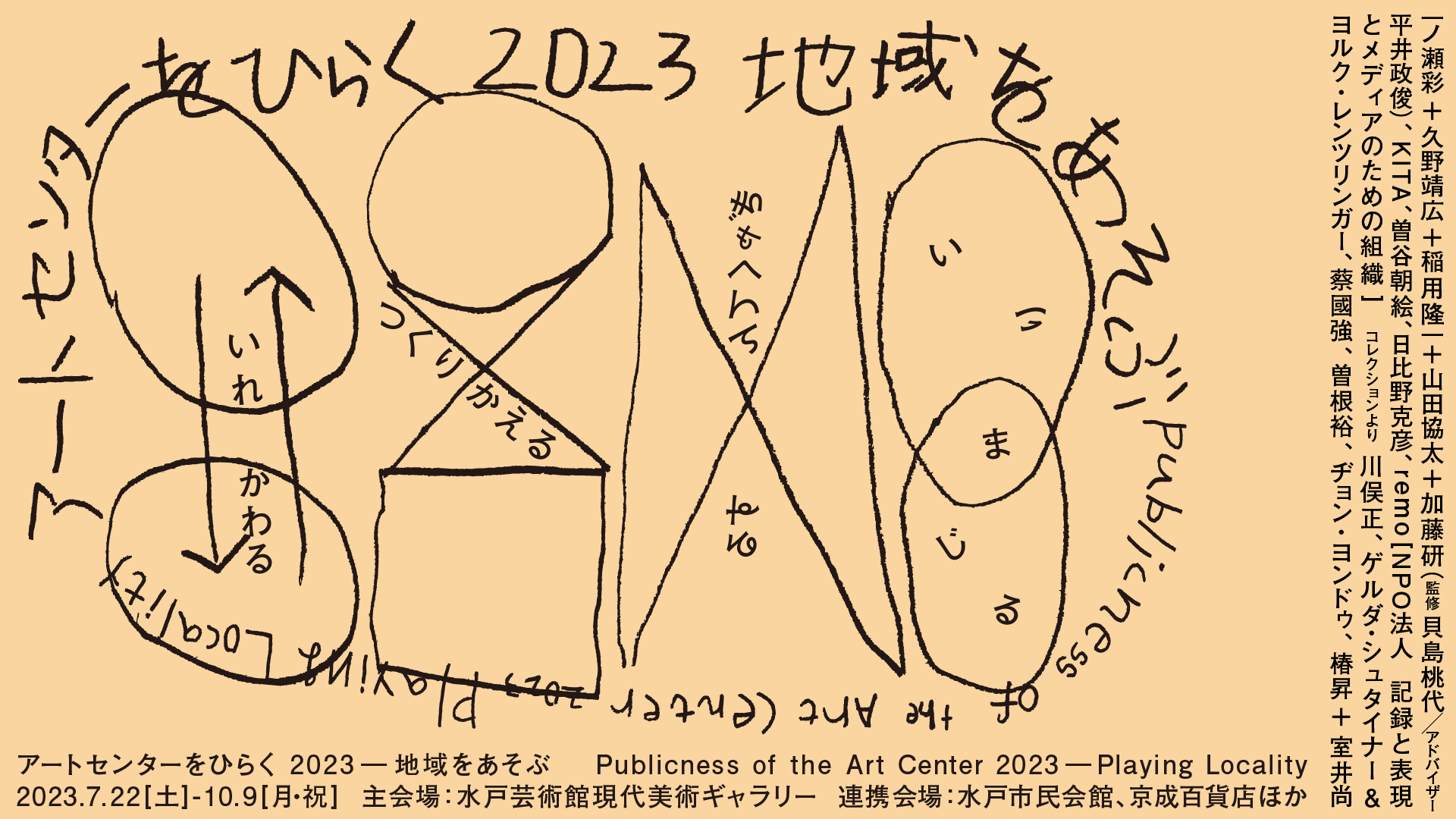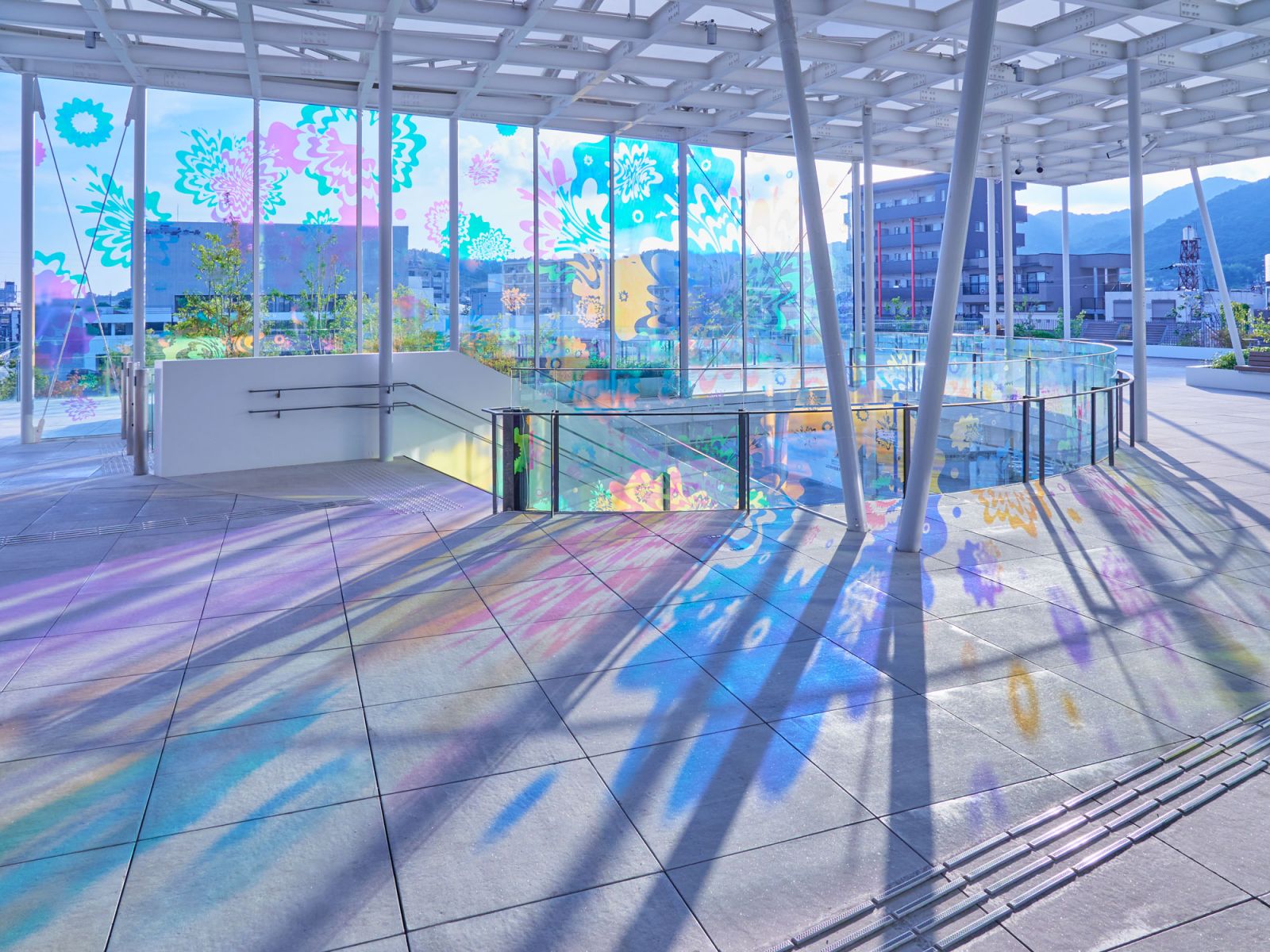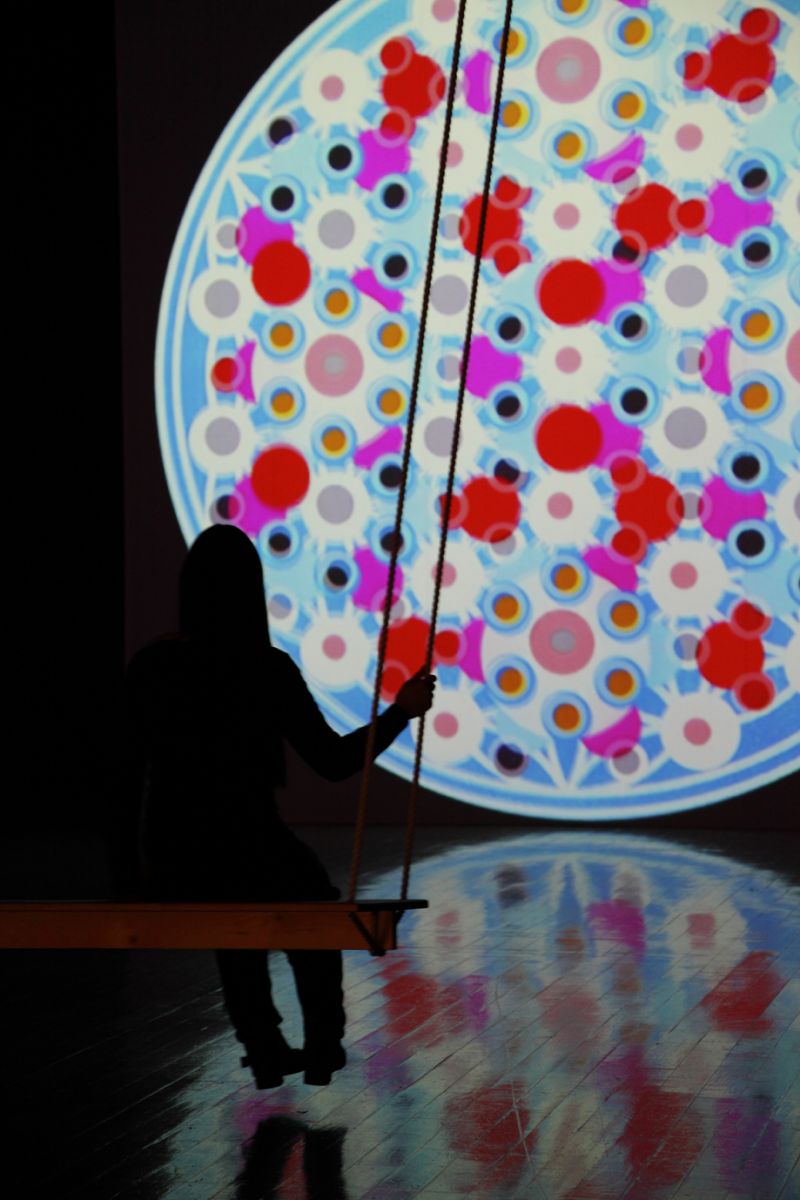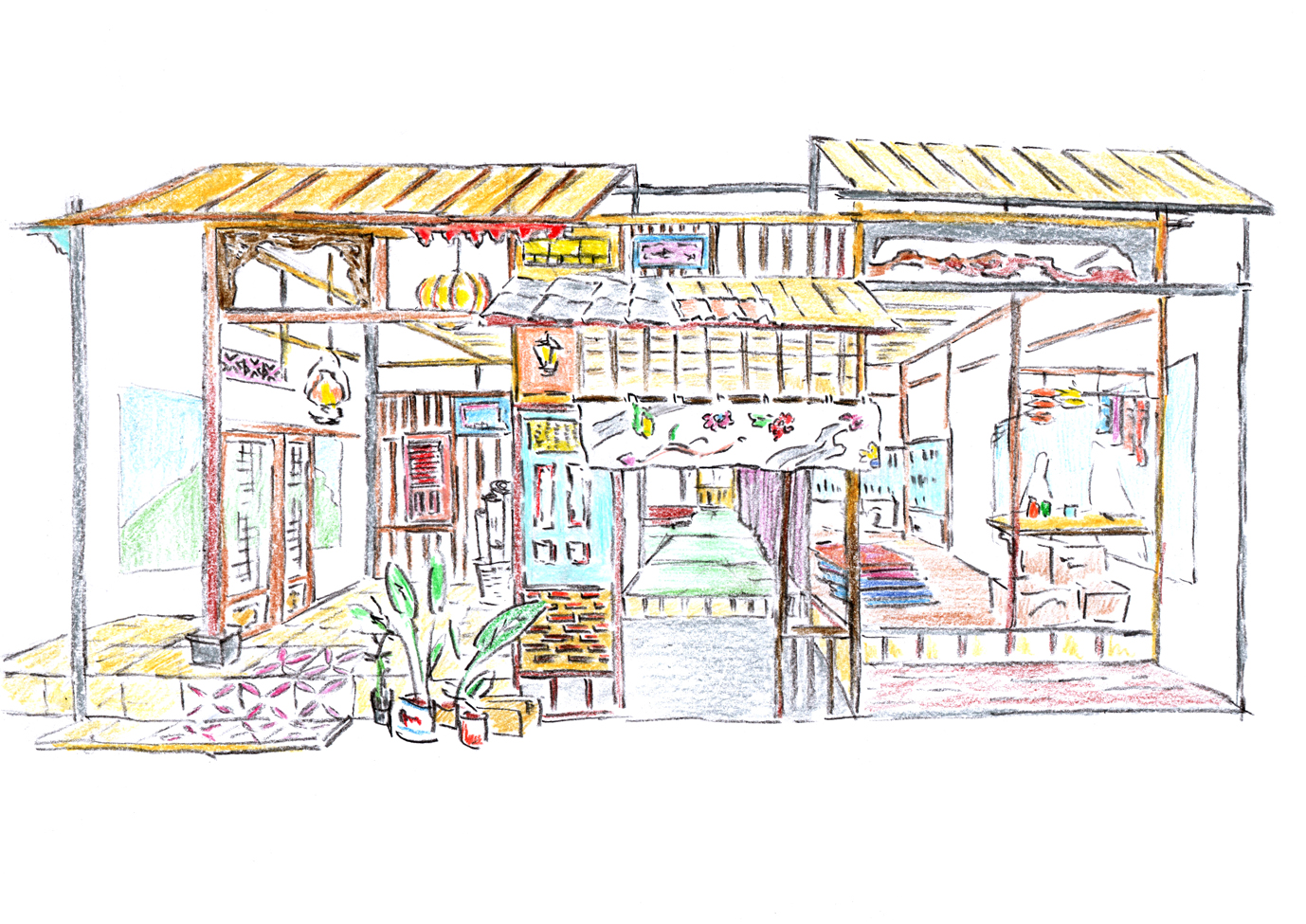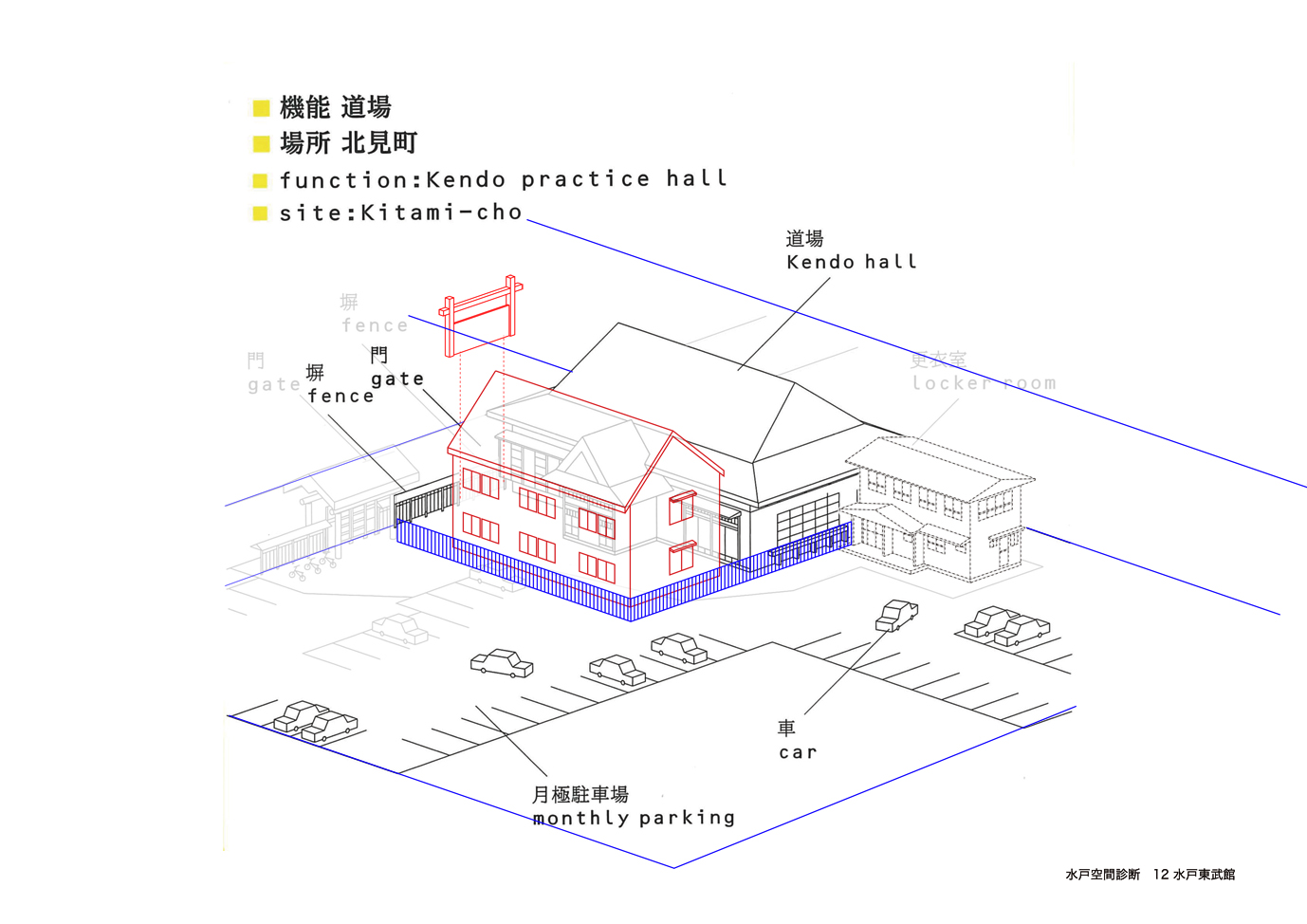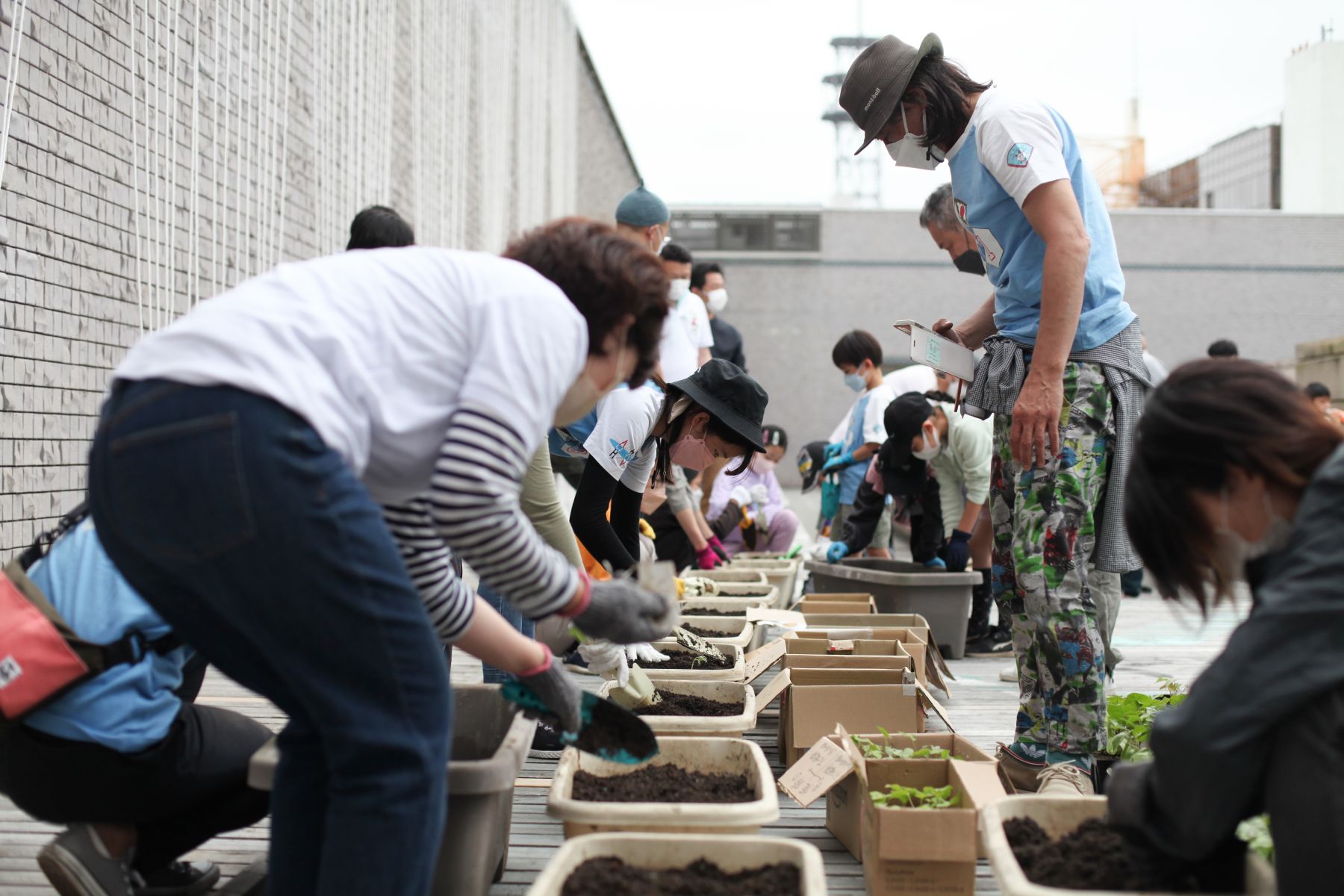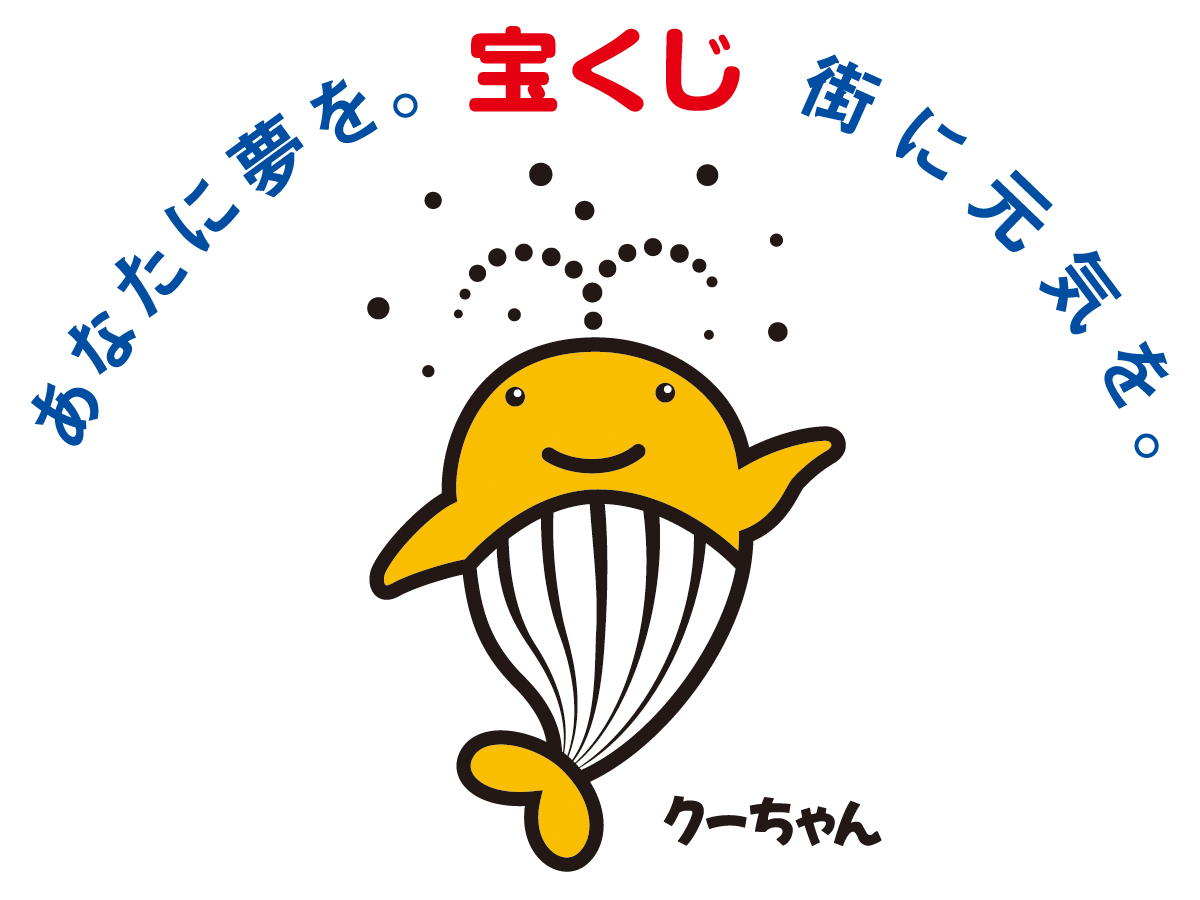Publicness of the Art Center 2023: Playing Locality
July 22 - October 9, 2023 10:00-18:00 (last admission at 17:30)
*Mito City Civic Center 8:30-22:00/Keisei Department Store 10:30-19:00
Graphic Design: Rikako Nagashima(village®︎)+Mio Kawakubo(village®︎)
To celebrate the inauguration of the Mito City Civic Center opening next to the Art Tower Mito, we are holding an exhibition connecting our facility to the surrounding area under the themes of “locality” and “playing.” It is the second installment of Publicness of the Art Center project, which refocuses on the characteristics of our Contemporary Art Center as an art center, considering the gallery to be not only a place for exhibition and appreciation but also a place where “art is born.” We foreground this creative role of an art center, aiming to create an environment that draws out the creativity of not only artists but also people in the community.
In our main venue, the Contemporary Art Gallery, we provide a space where people of all ages, from children to seniors, can enjoy creating and interacting. In addition, we exhibit our collection works with “locality” and “playing” as keywords, introducing projects that have been collaboratively conducted with local groups and citizens and becoming the hub for initiatives that take place across the city. There might even be projects set up by artists that you’ll get hooked on! Please come enjoy the Art Center, whose look changes with each project and something new is always in the making.
Aya Ichinose/Yasuhiro Kuno/Ryuichi Inamochi (Graduate School of Science and Engineering, Ibaraki University) + Kyota Yamada/Osamu Kato (Institute of Art and Design, University of Tsukuba) + volunteer students from Ibaraki University and University of Tsukuba supervised by Momoyo Kaijima (Atelier Bow-Wow, ETHZ)/advised by Masatoshi Hirai (Masatoshi Hirai Architects Atelier)
Profile
In the “CAFE in Mito 2004” exhibition in 2004 at Art Tower Mito, Kaijima Laboratory, University of Tsukuba and Atelier Bow-Wow conducted a survey on the current state of Mito’s downtown area, and compiled the results in a booklet “dead or alive.” 18 years later, from 2022, the followings are conducting a follow-up survey: Momoyo Kaijima (Atelier Bow-Wow, ETHZ), Aya Ichinose, Yasuhiro Kuno, Ryuichi Inamochi (Graduate School of Science and Engineering, Ibaraki University), Kyota Yamada, Osamu Kato (Institute of Art and Design, University of Tsukuba), Masatoshi Hirai (Masatoshi Hirai Architects Atelier), and students from the Architecture Design Program of the Department of Urban and Civil Engineering, College of Engineering, Ibaraki University; the Architecture Design Program of Major in Urban and Civil Engineering, Graduate School of Science and Engineering, Ibaraki University; and the Degree Program in Design, the Graduate School of Comprehensive Human Sciences, University of Tsukuba. Through these activities, they aim to look back at the past of the city of Mito, analyze the present, and contribute to the future.
Close
KITA
Profile
An expanding art collective formed in 2022 by members based in Japan and Indonesia. Taking their cue from the Indonesian word for “we” or “us,” “kita,” their activities that invite people blur the concept of “who is KITA,” challenging the notion of the subject of art. From communications that cross language, culture, and genre boundaries, they produce not only festive projects and artworks but also practical goods used in living spaces. As of May 2023, the core members are Aditya Putra Nurfaizi, Anastasia Yuanita, Jun Kitazawa, Siti Sarah Rayhana, Shohei Tsuda, Junpei Nousaku, Yuki Miyata, and Munif Rafi Zuhdi (in Japanese alphabetical order).
Close
Asae Soya
Profile
An artist who continues to work in painting and installation. She earned her doctorate in oil painting at the Graduate School of Fine Arts, Tokyo University of the Arts in 2006. She has won numerous awards, including the grand prize at the Showa Shell Contemporary Art Awards in 2001, the VOCA Award at the VOCA Exhibition in 2002, the Yokohama Cultural Award Culture Art Encouragement Award, and the Kanagawa Cultural Award Future Award in 2013. She has held many exhibitions nationwide, including a solo exhibition at Art Tower Mito in 2013 titled “SOYA ASAE EXHIBITION ‘sora iro’” and a solo exhibition at Spiral Garden in 2022 titled “Asae Soya Exhibition tokotoko fuwari.” She has produced exhibitions and public art in Tokyo, New York, Basel, and Xi’an and stayed in New York as a trainee of the Agency for Cultural Affairs in 2014 and in Basel as a dispatched creator for the TOKAS bilateral exchange program in 2018. She published a collection of her works titled “sora iro” with SEIGENSHA Art Publishing.
http://www.morning-picture.com/
Close
Katsuhiko Hibino
Profile
Born in Gifu City in 1958. Graduated from Graduate School of Fine Arts, Tokyo University of the Arts in 1984. His three-dimensional works made of cardboard attracted attention and won the grand prize at the Japan Graphic Exhibition in 1982. Since then, he has exhibited at numerous exhibitions, including the Venice Biennale in 1995. In recent years, he has conducted many art projects that make use of regional characteristics and relationships as well as people’s individuality. Since 2015, he has been supervising the art project “TURN,” which creates expressions from interactions caused by encounters between people beyond differences such as disability, generation, gender, and nationality. Since 2017, he has been supervising the human resource development Diversity on the Arts Projects with the theme of “art x welfare.” He received the Minister of Education, Culture, Sports, Science and Technology Award in the 2015 Art Encouragement Prize Development of the Arts Field. Currently, he is the president of Tokyo University of the Arts; the director of The Museum of Fine Arts, Gifu; and the director of Contemporary Art Museum Kumamoto.
Close
remo [record, expression and medium – organization.]
Profile
remo is a nonprofit organization that works from three perspectives through media: “knowing,” “expressing,” and “discussing.” Founded in Osaka in 2002, the organization encourages expressive activities such as media art; promotes the idea of “video as stationery”; and creates new places to watch videos collectively. Activities include (1) remoscope, a video haiku session in which participants talk while watching videos filmed according to six rules; (2) Neighborhood Film Club, in which people who have just met make a film from script to appreciation in three hours; (3) Alternative Media Gathering, in which participants learn media creation to convey their own voices by themselves; and (4) AHA! [Archive for Human Activities], focusing on the value of private records.
Close
Reference Picture
Click thumbnail picture to enlarge the picture

